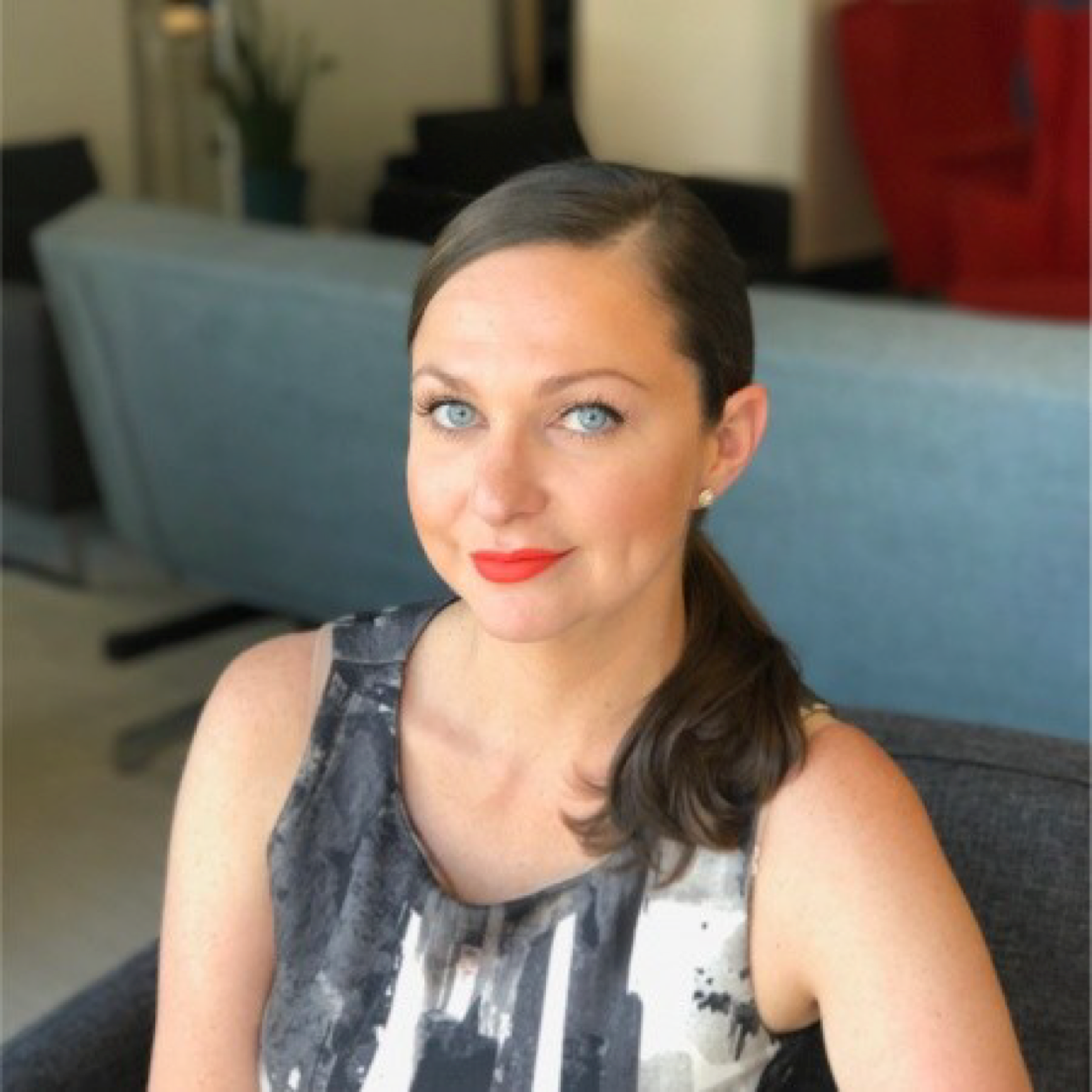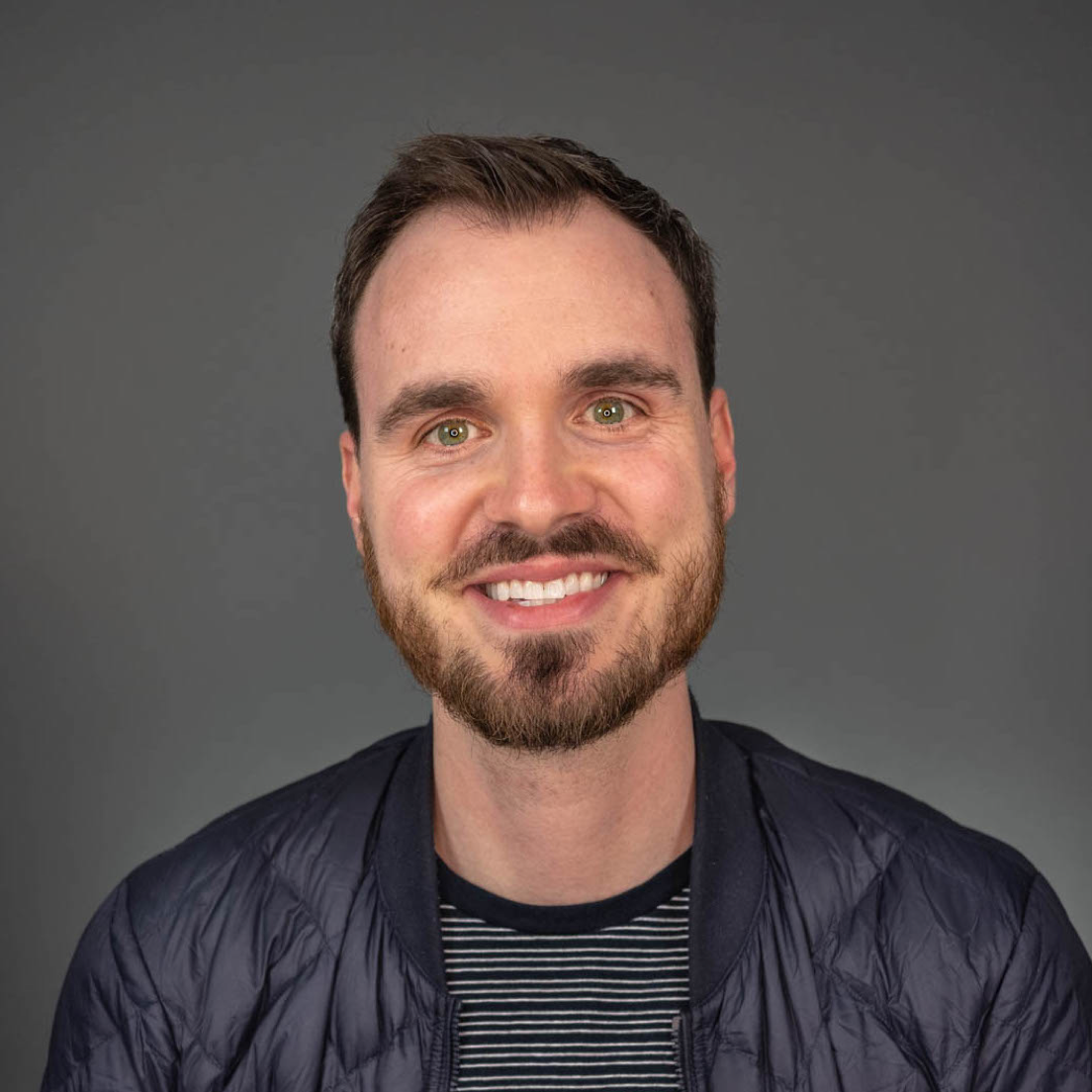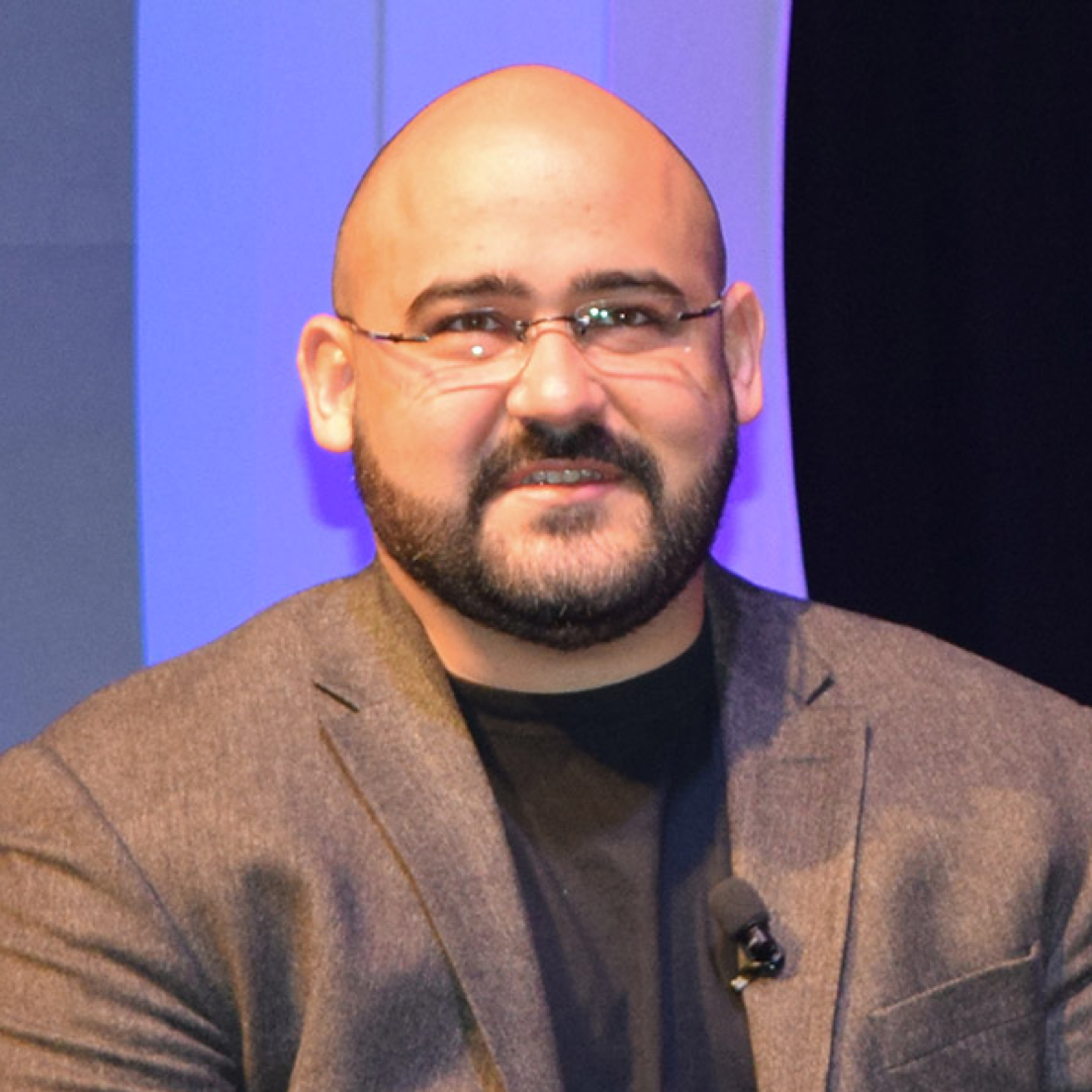About the episode
Melissa Romig got her start in digital marketing in 1999, bringing a deep agency background to her role as MOO’s Digital Marketing Director for North America.
She connected with host Matthew Kammerer to discuss the challenges of building a marketing team from scratch, what B2B ecommerce looks like in today’s world, and the huge value of brand marketing.
You can connect with Melissa on LinkedIn.
Don’t have 30 minutes to spare? Jump ahead to key sections outlined below, or keep scrolling for a full transcript of the episode.
- [05:43] What’s the biggest hurdle about managing a day-to-day marketing team?
- [07:30] How can marketers start preparing if they want to go into management?
- [08:47] How should people pitch their bosses on new marketing ideas?
- [11:44] How does your team balance sales and marketing objectives?
- [13:28] What are the core differences between your inbound and outbound strategies?
- [17:02] What was the process for picking a new attribution tool?
- [21:16] What’s the role of retargeting in MOO’s marketing strategy?
- [22:12] Is there still room for brand advertising in today’s digital marketing industry?
- [24:42] How do you sell brand marketing internally?
- [27:36] What’s your best advice for B2B marketers looking to grow in their careers?
""We are basically investment managers. We spend money to make money.""
Episode is brought to you by
-

Matthew Kammerer
Show Host -

Vanessa King
Producer -

Joshua Schnell
Producer
Show Transcript
Matthew Kammerer: You're currently the North American Marketing Director of Digital at MOO. What does your day-to-day look like?
Melissa Romig: It looks different every day. In January, we pulled everything in house. So that can't obviously happen immediately. That was something that we transitioned into over the course of 12 months. So officially we severed ties with our agency at the end of December and everything is now my team's responsibility.
I have a team of channel managers. We do every channel in-house, and we're pretty active in nearly every digital channel you can think, so from SEO, social, display, affiliate, awareness—all of those channels. We are basically investment managers. We spend money to make money. And we are kind of also product managers. We are project managing the creative process because we also have an in-house creative team that's in London. We could be on any given day briefing a new set of paid social ads, we could be working with the team on our quarterly wrap up to present to the executives, working with the merch team and the site team on building out new customer journeys and new user flows to try to increase conversion rates.
You know, I think every day it's a little bit different and every day we're looking at the results from the day before and how are we trending. How are we trending as a portfolio? How are we trending in each channel? And then we have to react to those things. So while you might come in in the morning thinking your day looks like one thing, if there is some sort of anomaly in the performance then we have to scrap everything we thought we were going to do that day and figure out what is going on with the business and is there anything that we can do from a marketing standpoint to reverse that trend.
Matthew: It feels like your role is so similar to a scrappy startup. How large is MOO?
Melissa: MOO has about 500 people. So we're definitely not a startup. We've been around 11 years, but in a lot of ways there is a very entrepreneurial spirit here. When I started I had two people and now I have 12. So in three years, you know, my team has grown but every team has grown and we're definitely maturing as a company.
So I think we're in that interesting phase of operating like a start-up but now we're getting big enough where we have to have a lot of process and we have to make sure everybody is aligned on OKRs and KPIs and the company objectives. While operating like a start-up is encouraged, we're all still trying to figure out how to make sure everybody's aligned, we understand roles and responsibilities between different departments, and that we're all working together to accomplish one goal, which is revenue. We're an e-commerce company, so if we don't make money none of us have jobs.
Matthew: Yeah that makes a lot of sense. I feel like in leadership your whole day can stack up with one-on-ones. But when you're meeting with your team and you're building these relationships and helping them grow, is there something you look for to make those meetings valuable?
Melissa: So, I have two different kinds of meetings with my direct reports. We have a weekly one-on-one where we just talk about their to-do list because a lot of times when you have so many people reporting into you, you have to make time and you have to schedule time for everyone just to make sure that they get that time because my days are pretty much full with meetings from start to finish.
So I have those weekly one-on-ones scheduled, and we go through their to-do list and we just talk through any blockers that they have. Is there anything I can do to help them get past that blocker? Is it something that they just can't get past with another team? Do they need help with communication? Is it help with data or strategy help? Maybe there's no blocker other than they just can't figure out how we should communicate our new product.
So those one-on-one meetings are very helpful to go through the to do list and make sure all the projects are on track, and then I have monthly meetings with each of them to talk about career progression. As a company, we also do reviews twice a year. And so there's a lot of communication about how you're doing against your goals and you're setting goals twice a year, not just once and so we have pretty regular check-ins to talk about how you're doing against your goals because last thing we want is for someone to get to their review and be surprised by something that's in the review.
So I think it's important to separate the meeting to talk about your to-do list from the meeting to talk about your career progression. And so that's what I try to do with all my direct reports.
Matthew: What's the biggest hurdle in managing that day-to-day of your marketing team?
Melissa: So I think it's very rare, at least for my team, that the hurdle is within the team. We are in lockstep with each other. Everybody works together really, really well. Initially maybe there was a hurdle in each channel manager had their separate revenue goal. And so it would be really difficult for a channel manager to recognize that maybe the money that they're spending could be better spent in another channel for the sake of the whole portfolio.
And I think that we've done a lot of work over the last couple years to get away from that mentality and help everyone to think about it as one team and not "this is your goal that you have to meet and if you don't meet it, then there will be consequences." We talk about it as our team's goal and whatever we need to do as a team to meet that goal, whether we need to move money from place to place or shift responsibility. That's been working really well.
Our biggest challenge honestly is inter-team communication. I'm sure this is not unique to us, but marketing people don't speak the same language as creative folks and those two teams don't speak the same language as the analyst or as the tech team. So we have to go into every interaction with every team understanding what's motivating them.
What are they going to understand? What do they care about? What's the best way to get them to understand what we need them to do and why? And so while we kind of have to sit in between all these teams to understand those motivations and act as that project manager and the bridge between a creative and BI. So I think it's just trying to trying to understand how to best communicate with each different department to get them to do what we want them to do.
Matthew: That makes a lot of sense when you're thinking about a mid-level marker who is thinking about a management position as a career goal. What's your best advice for them?
Melissa: The best advice I would have is when you get to a certain point in your career, it's okay to acknowledge that you don't know everything and to hire people who know more than you do about certain things. Each one of my channel managers knows so much more about that channel than I do, and they just have to trust and respect that I know more about the overall picture and that I'm their bridge to the other departments and the other teams in the leadership team.
I think it's being able to build that relationship with employees that you're going to manage, that trust and respect, and know that they always have things to teach you and you're never going to know everything. But you should be brave enough to hire people who know more than you do. Like my weakness is SEO. That's not what I'm the strongest in, and I don't have as much background in that channel as other channels. So I need somebody very, very strong on my team to handle that and to teach me more about it.
Matthew: What's the best way for somebody on your team to pitch a new idea and get engaged in new growth opportunities inside of your team?
Melissa: This is a good question because twice now since I've been here, I've helped people move into roles that did not exist before. We basically created roles that really played to their strengths, but were also places that the business didn't have anyone in.
So a good example of that would be marketing operations. Now, that's a role that I think more and more organizations are creating, but you have to be a certain size before you really need it. And so I think marketing ops are growing opportunities and there are different ways that you could grow into those. Some people grow into it from analytics some people from marketing, but you have to have a real interest in the technical and data side of things, but you also have to have some marketing knowledge. And it's not something that a lot of marketers want to do because it is very tech and data heavy. But if you identify somebody who wants to do that, it's a great career opportunity.
And so we didn't have anyone doing that, but as we got bigger as an organization, we're spending more money, we have more data coming through, we're looking at last click data, we're looking at attribution data, we've got, you know, probably 8 different pieces of adtech that we're spending a lot of money on, and so I think there was just this need for this person. I believe there was a need and I had someone on my team who I knew would be interested in it, and we talked about it a lot and we built a business case for the business together to go and present to the executives to say we think we need this role and we have somebody who's perfect for it and is very interested in it. This is what's happening. In other companies, this how they're approaching it. That's how we would approach it. And it was approved, so we were able to move him into that role.
I've done it a separate time for someone who was really interested in the technical side of SEO because that was something that we were outsourcing for a while. So I think most businesses should be pretty open to having these discussions. If you present it as a business case, and you really identify for them how this change would help the business while at the same time understanding how it would help your employee.
Matthew: So it's really threefold right? So you look internally to see what's happening inside of your organization, keeping your eyes open to that, looking externally to see what's happening in other use cases and other marketing organizations, but also just keeping the open line of communication so that you know those skills and the opportunities, and you just work to pair those together.
Melissa: I think as a manager you have to identify if you've got an employee who has skills that are being unused or underused, and you can see that they have a passion for that, it's your responsibility as a manager to figure out how you can help them use those skills somehow whether that's in their job or outside of their job. But if that's really what they're passionate about, they're going to be a better employee if you let them do what they love.
Matthew: Absolutely. Well, let's take a step away from management and move into marketing strategies. How do you balance sales objectives with marketing objectives?
Melissa: I'm not sure that those two things would often deviate for us. Now the one place that it might is when we run awareness activity or upper funnel activity. The measurement for that would be very different than measurement in programs that are intended to drive directly to sales, and so it's difficult to lobby to be able to spend that money and then you run that activity and then everybody wants to know how much revenue it drove. I think it's a lot of education on our part to explain to people how long it might take for that activity to turn into revenue, where it might manifest because it's probably not going to manifest in the places where you ran the activity like video. For example, you're probably not going to see a lot of revenue coming in from video, but that video might influence revenue coming in later from a different channel like SEO. So attribution to help you make that case and we found that has been pretty effective.
Using attribution measurement really helps you get the things that you believe need to be done as a marketer. Like we believe that we have to do upper funnel awareness activity. We know it's not going to be very ROI positive at the time that we run it, but we have the data to start to tell the story. It will trickle down. It's just a matter of when. So we look to things like timeline to conversion and do we see spikes in our site traffic. But we try to balance revenue driving activity with awareness driving activity.
Matthew: Are there any differences between your outbound strategy and inbound strategy?
Melissa: Yes. My team does a lot of acquisition versus retention. So all of our paid activity is really dedicated to acquisition while a lot of our CRM activity is dedicated to retention. So for us, that's how we think about inbound versus outbound, and I think we have the measurement to show that all of our paid activity that's intended to drive acquisition also impacts retention. And all of the CRM that they're doing, because that is the one thing that doesn't sit in my team, is also impacting acquisitions, but the strategy that I use and the strategy that the CRM team uses is singular in its focus.
When we deploy a paid campaign, we're not trying to accomplish both retention or both new and returning customer sales. We speak to new customers very differently than we would speak to an existing customer, especially for a brand like ours where we aren't the category leader in terms of business online printers. There is someone that's much larger than us that spends a lot more money than we do, but our product is differentiated and for some people they care about that. For some, they don't. If they don't care, they're not our customer.
But you know, once you become a customer, our customers are very loyal and as soon as they see and feel the product they're bought into it. So the challenge that I have on the acquisition side is getting them to just give us a try because our prices are a little more premium. So, you know, our marketing challenge is about why you would spend a little bit more.
Matthew: Yeah, I mean I'm a customer myself and I can attest to that. How do you get somebody in the door to show them with a low barrier to entry? Like if the big differentiator is really holding that product in their hands. Is there a way to get that to people to make a bigger commitment?
Melissa: Yeah, I mean one of our strategies is a sample pack. So we will send out sample packs to people, and that definitely helps. So I do have some marketing campaigns where the KPI is cost per sample pack and then we will follow those sample packs through to sale to see if that actually converted. We go to events, so people are able to see and feel the product and once that happens, it's usually a pretty easy sale.
But it is a challenge if you are going to try to convert somebody without first getting it into their hands. So we do things with our marketing. Like we try to show the texture of the paper or the thickness of the cards. We try to show the creativity of some of the templates. We showcase a lot of our customer work and it's beautiful. It might be a little strange to describe business cards as beautiful, but that is the most commonly used word that I hear customers say. A lot of vendors who come in for meetings, who are our customers, and that's how they describe the cards and the things that these small businesses do with our products are amazing. I mean the designs people come up with are just amazing and beautiful to look at, so these are the things we try to showcase in our marketing and we focus on the value proposition. We are premium product, but there's a reason that does tend to work for us.
Matthew: So we talked a little bit about attribution models when we were comparing sales objectives and marketing objectives. And I know from personal experience, you just went through an RFP for an attribution tool.
Melissa: We did.
Matthew: How did that process go? What was it like? Tell me a bit about it.
Melissa: This is not our first. We had an attribution vendor for two and half years before we decided that we might need to make a switch. And the main reason for that was because our international team. Different vendors work better for different regions. And the vendor that we had gone with originally was great for the US and maybe not as great for the international team. So we really wanted a global solution and we were pretty pretty happy with the attribution data that was coming through. We were making optimization decisions based on that data, and it was moving the business forward.
So we really believe in attribution as a measurement methodology, but we learned a lot. It wasn't a completely painless process. It is a lot of work to implement attribution. Luckily this time around we weren't in a situation where we had to educate a lot of people on what attribution was and we didn't have to educate them on, you know, the view you're going to see now in our report might be a little bit shocking because you're used to seeing these channels as top performers and now it's going to look different. Luckily that was something that we had already done the first time around. So this time what we learned was, you know, the first time around it was really a marketing-led initiative. And you know, the person that's going to use it most is the marketer, but the teams that you need to implement it are the tech team, the developers, then you're going to need the BI team, the analyst, they have to believe in the measurement. They have to vet the methodology. They have to vet the data coming through before we're allowed to start using it.
So we really approached it this time as a joint RFP process between marketing, business intelligence, and marketing technology. So all three of us were at the table for every meeting. Everybody scored it, and we all came to an agreement together, and the implementation process is almost done with our new vendor. But it's been equal parts from all these teams. So it is impossible to implement as marketing alone. And I think that's probably the biggest issue that people have is trying to get it done without the support of these other teams.
Matthew: Yeah, I've heard that across multiple organizations. I'm kind of interested to hear when you first implemented attribution, you said that you may see a bit of sticker shock on channel attribution changes. Where did you see that? Did you see a massive shift away from paid search as like the primary driver or what were the major changes you saw?
Melissa: For us, our biggest channel is direct, which is just people typing in MOO. And our second biggest is SEO, and those two channels together in the last click model make up a much larger percentage than in attribution.
Because we are a product that very rarely people would buy in a single session, so a lot of people will be driven to the site the first time through paid marketing, but then will come back a second, third, and fourth time to finish designing or you know, do whatever they need to do, and that last touch probably won't be from marketing because they will have already been to our site.
So coming through SEO or direct was one big change, is that a lot of the channels that the company was thinking were free ended up not being really free once you take into consideration all the paid points that went into a conversion that eventually ended with SEO or direct. So that was one thing, that all of our paid channels got a lot more credit.
Obviously the one that got credit was display because there's post view activity that last click doesn't necessarily give credit for, and display is a more upper funnel channel. Banners and sponsorships and that sort of activity. So we definitely saw a rise in display, a rise in social, and a drop in SEM, a drop in affiliate.
So a lot of the channels that are considered very low funnel definitely saw a shift. So for me, it wasn't anything surprising because it all made sense. I'm sure for a lot of other people in the organization, there was some shock.
Matthew: Do you do any paid promotion to push somebody through that funnel process? They make it to step two or three of ordering. Do you do any retargeting or anything?
Melissa: Oh, yes attribution loves retargeting. We do retargeting in all the channels where we can, so that is the one complaint I would have about attribution. Neither of the models that we've used really understand that retargeting can't happen without the touch points before, like you can't be retargeted unless you have been to the site before and they're obviously a channel that drove you to the site before. So because retargeting is so effective, I think it gets overweighted. So what we have to do on our end is just know that if the tool is telling us to put all our money in retargeting, we obviously know that as marketers that's not the right thing to do. So even though we have these measurement tools, it's still a little bit of art and science in the interpretation and the way that we deploy the findings.
Matthew: So we talked a little bit about awareness marketing and brand marketing. So much of marketing today is about delivering leads and signups in a measurable way. Is there still room for brand advertising?
Melissa: We believe so, yes. I mean I think for us, if you don't believe that then you might end up in a position where you're just a commodity. So, I mentioned before we are a more premium product, so we can't afford to be thought of as a commodity because people would probably not choose us.
Our brand is important. We believe that our brand personality is important and that we want to be a fun brand, and we believe that people want to use a product from a fun brand, and so we have brand tenants that we stick to and that we will never stray from. One of the things that we will not do is heavily discount because that's just not on brand for us. So you will see occasional sales and some discounts from us, but we won't use the same tactics that some of our competitors use for marketing, and we're okay with that because we're comfortable in our brand and what we stand for. So I think it starts with just having a strong understanding of what your brand personality is and then how are you going to communicate it?
So, you can do that organically certainly through organic social, through your website. We have a blog that's great and we have an amazing content team that writes for the blog, but those things are mostly seen by existing customers. So obviously we have to spend some money to let people know who we are. I think a couple of years ago, we were probably not doing as much awareness as we needed, and we were really optimizing ourselves to the bottom of the funnel when we started to see declines in year-over-year business because we just weren't feeding the funnel anymore. And so we did a big presentation to say we can't just look at the bottom line with all this activity. We have to keep bringing new people in and introducing new people to the brand and we made the business case for it. And, we were approved to move forward with that strategy and it is paying off. We knew it would, and as a marketer you have to believe that. I can't imagine any marketer would think that you could operate without a strong brand and without running some sort of activity to keep letting people know that you're out there. Who are you? What do you stand for? What can you offer? And just continuing to bring in new customers.
Matthew: So you talked about building a business case for that. How do you sell that internally?
Melissa: It was all about site visits right? Because we're 100% e-commerce. So it was not a difficult thing to get people to understand that the more site visits we bring in, eventually if we can hold our conversion rate the we'll have more revenue, but if I just keep talking to the same people I'm not going to be able to grow site traffic. So gross traffic.
I have to reach out to new people, and I can't reach out to new people with a message that says the same sort of retargeting message that might say 10% off. Well, if they've never been to me in the first place that doesn't mean anything to them right there in their research mode. They need to know a little bit about who we are and what our unique selling propositions are. So that was the way we approached it. It was about just illustrating how site traffic will eventually lead to revenue and we have to keep that site traffic healthy. And this is the way that we were going to do it.
Matthew: Was there any pushback or was it pretty clear?
Melissa: I think it was not push back as much as okay, well you're in charge of your own revenue. And if this is the way you think you need to spend the money, go ahead and spend it. But the risk is that if it doesn't work, then we would have to pull the plug. So on the marketers side, it's your own risk.
And so I think, and maybe not every company works that way, but around here we have the trust from the rest of the company that we're going to do what we think is going to help us meet our goals. So we roll it out cautiously, but again, we didn't make the case until we had enough data to build a good business case. You know, there is the challenge of you've got to think it through, you've got to lay it out, and you may have to do a little bit of testing to be able to make that case.
Matthew: You've shared so much knowledge with us. Is there anything that you'd like to add that I haven't asked you today?
Melissa: The only thing I would say is that marketing is becoming so different now than it was because the more and more digital there is, the more you just have to be so much more well-rounded. It's not just about strategy. It's not just about creative now. It's so much more about tech and data and getting the creative and the tech and the data to work together and it requires a different skill set than I think maybe marketers from 10 or 20 years ago would have had.
So I think we look for different skills now with some of our marketers. We look for people with engineering backgrounds. We look for people with finance backgrounds or analytics backgrounds. And I don't think that that would be the way that a marketing team was made up 5 or 10 years ago. So I think it's opening the field up to new people and even the people who have been in it for a while just have to think about these new skill sets.
Matthew: What's your best piece of advice for B2B marketers looking to grow in their career?
Melissa: I would tell people to make sure that you're comfortable with data, with tech, with strategy. Make sure that you're well-rounded in all of those things and that you're not too focused on one or the other, you know, because different companies will need you to use one of those three things a little bit more. But as you move around in your career, you'll find that it's different things that you'll need to stretch in any given time. So it's hard to to be sharp on all those things and I've personally find it the hardest in tech because, again, I think data and strategy are things I'm very strong in and tech is a little bit newer for me. Making sure that I'm keeping up to speed on everything going on in the market and marketing ops world, but that's something I'm super dedicated to.
Matthew: Thank you so much for your time today Melissa. I really appreciate everything you shared with us. Where can listeners find you online?
Melissa: They can find me on LinkedIn or Twitter. I'm happy to engage with anybody on those two channels.








